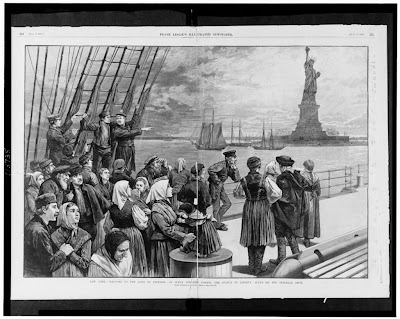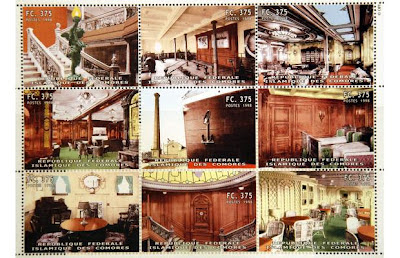Showing posts with label historical design. Show all posts
Showing posts with label historical design. Show all posts
09 May 2013
The History of Typography - A video short
Enjoy this video short on The History of Typography by Ben Barrett-Forrest.
"Knowing where we come from helps to direct us forward."
08 May 2013
Google Does Saul Bass
Today, Google honored the birthday of the legendary designer, Saul Bass with a Google Doodle Video. Thank you Google for honoring design.
06 August 2012
Olympic Posters
The Creative Bloq has a survey of the 10 best Olympic poster designs. The blog post has an excellent background on each poster.
I hope you are enjoying the events. I seem to not be able to stop watching.
14 June 2012
Flag Day
Today we celebrate Flag Day. The Continental Congress passed an official resolution on June 14, 1777, “that the flag of the United States be 13 stripes alternate red and white; that the Union be 13 stars, white in a blue field, representing a new constellation.”
On of my favorite flags from U.S. history comes from Ft. McHenry during the War of 1812. This flag went on to be the inspiration for Francis Scott Key to write the poem that became "The Star-Spangled Banner." I send many school trips growing up visiting Ft. McHenry and it inspired my love of history. To see this most famous flag in person, take a visit to the Smithsonian.
15 April 2012
Titanic Stamps
The Edmonton Journal has a great collection of stamps to commemorative the sinking of the Titanic a hundred years ago today, April 15, 1912. Take a look and see how the world is remembering this event.
15 February 2012
Get Your Map On

The USGS has a site where you can download historical topographic maps. The maps are in high resolution and cover the United States.
To search and view, go to this link.For more than 125 years, the U.S. Geological Survey (USGS) topographic maps have accurately portrayed the complex geography of the Nation. The USGS is the largest producer of printed topographic maps, and, prior to 2009, USGS topographic maps were created using traditional cartographic methods and printed using the lithographic printing process.Because historical maps are stored in a limited number of collections and are not readily available, the USGS National Geospatial Program (NGP) is converting these historical printed topographic quadrangles to an electronic format (GeoPDF). This scanning and processing effort serves the dual purpose of creating a master catalog and digital archive copies of the irreplaceable collection of topographic maps in the USGS Reston Map Library, as well as making the maps available for viewing and download from the USGS Store.The processing of this invaluable collection is well underway, with more than 141,000 GeoPDF maps of the approximate total 180,000 currently available for download. Over the next months the number of files available, in a variety of published scales, will continue to expand until all of the topographic maps created throughout the Survey's history are once again available to the public.
07 December 2011
18 November 2011
Photographic Portraits - Louis Daguerre




The magic of a photographic portrait was made possible by the contributions of Louis Daguerre (18 November 1787 – 10 July 1851) in the development of what was called the Daguerreotype images. The process started by first exposing silver-coated copper plates to iodine, obtaining silver iodide. Then Daguerre exposed them to light for several minutes, coated the plate with mercury vapor heated to 75° Celsius (to amalgamate the mercury with the silver) and finally fixing the image in salt water. This process gave an exact image and allowed photography to come to the masses. It was still an expensive and time consuming event but available to all through trained photographers. Many great examples of Daguerreotypes can be found at the Library of Congress to explore. Thanks to Daguerre's innovations, photography has become not only an everyday activity but a beautiful way to explore history.
11 November 2011
The "eleventh hour of the eleventh day of the eleventh month"




Today is special not just because it is 11/11/11 but also for what we now call Veteran's Day. The origins go back to the end of World War I where the armistice was signed to end the "Great War". The armistice went into effect on the "eleventh hour of the eleventh day of the eleventh month" to put an end to the battles on the Western Front.
Let us today not only remember it for the once in a lifetime date of 11/11/11 but also remember those who have served.
(images via Library of Congress)
30 October 2011
The World's Most Photographed Lady







Friday marked the 125th anniversary of the world's most photographed lady, Lady Liberty. Her formal name, the Statue of Liberty Enlightening the World was a gift of friendship from the people of France to the people of the United States and is a universal symbol of freedom and democracy. The Statue of Liberty was dedicated on October 28, 1886. After 125 years she is still a beautiful lady. To read more visit the National Park's Statue of Liberty National Monument.
(images via LOC.gov)
15 September 2011
Historical Medicine




The National Library of Medicine has a vast collection of images all things medical of course. The image collection crosses over to cover items from around the world in illustrations, photographs, advertising and posters. The collection is another great inspiration site with many images that are copyright free from the government. Go for a browse and explore at this link.
National Archives of Inspiration










The National Archives has released a score of images that you can use for the most part copyright free. The images can be found at this link includes over 100,000 images with almost 20,000 categorized at this point. This images are a wonderful source of inspiration and examples of our history in times past.
Subscribe to:
Posts (Atom)






















